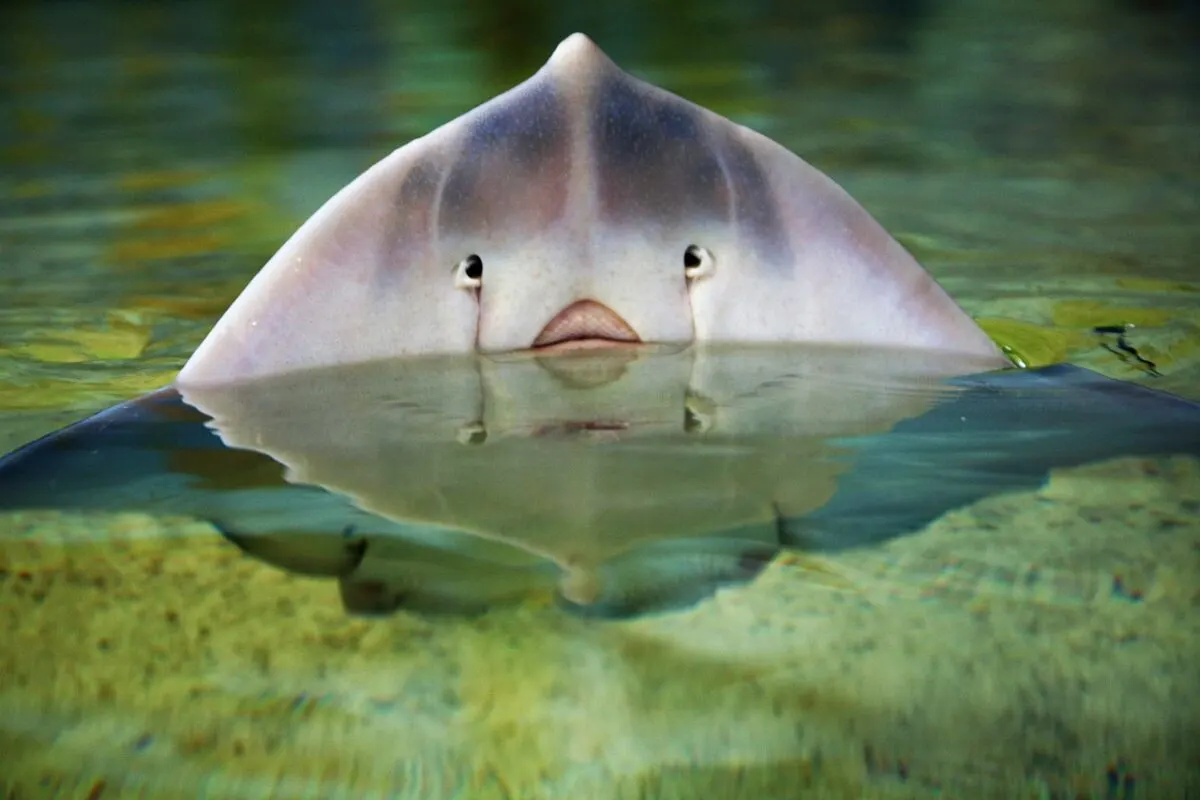Are you ready to become an expert on this intriguing bottom-dweller? Yes, we’re talking about the skate fish.
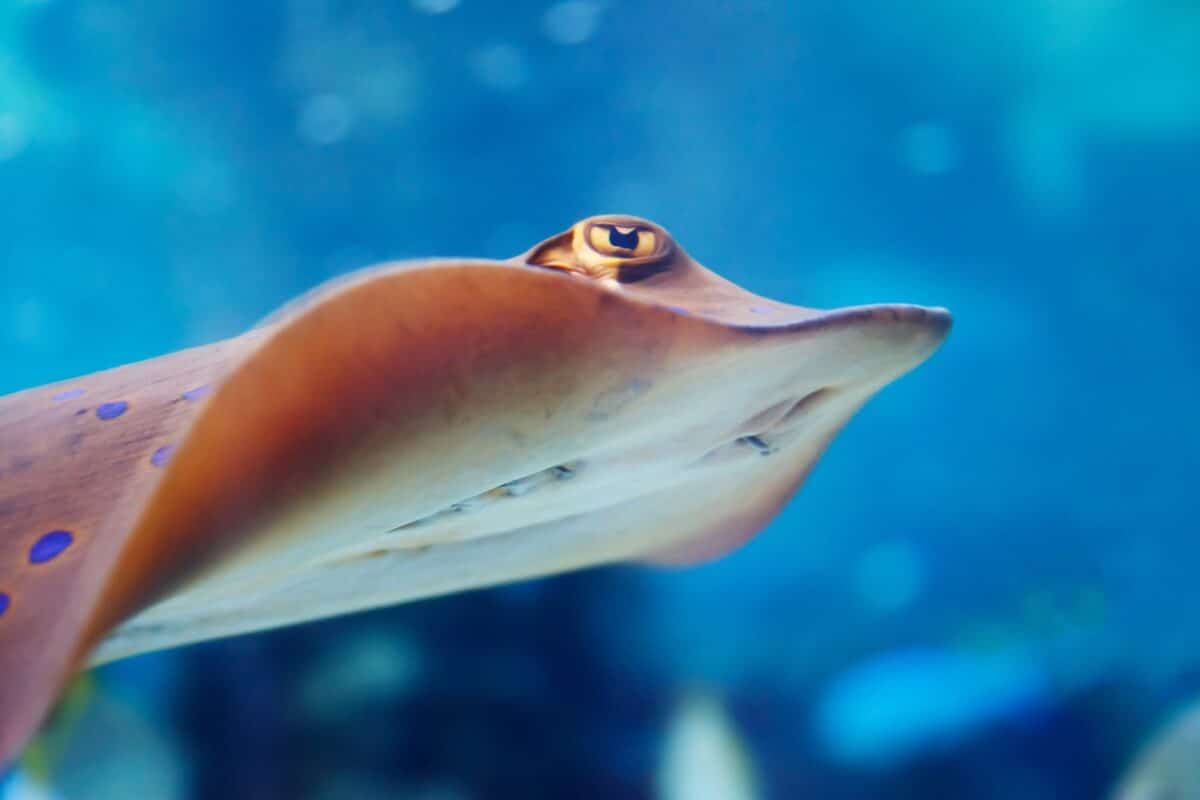
Did you know that skate fish have a long and fascinating history with humans? People have been consuming skate fish as a food source for thousands of years, dating back to ancient times. In fact, skate fish was even mentioned in the Bible!
In this post we’re going to deep-dive into all things to do with the Skate Fish. After having looked at their interesting history, we’re going to throughly examine their various physical traits. Likewise, we’ll also debunk some of the popular myths regarding this intriguing species of fish.
Jump ahead to any section of your liking below:
History
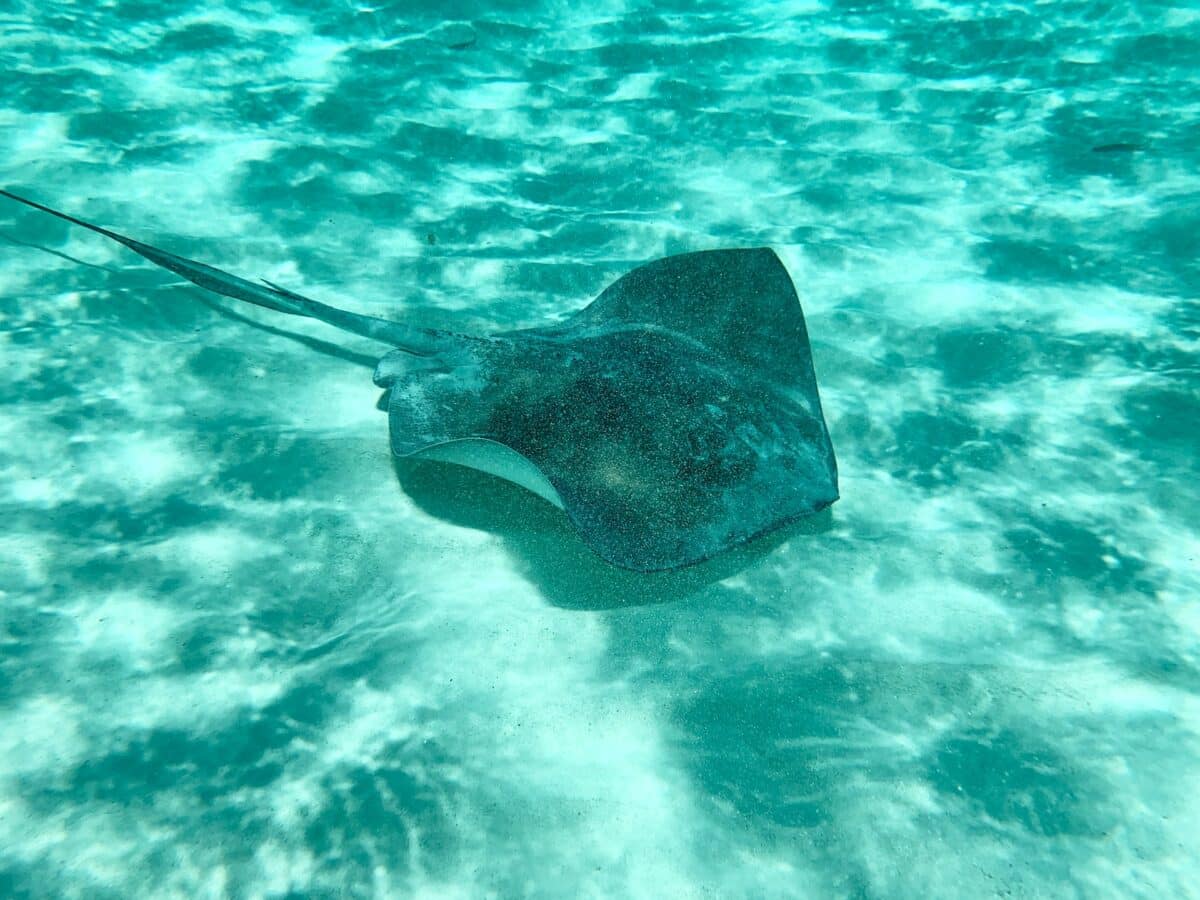
During the Middle Ages, skate fish was a common food source for the poor, as it was plentiful and cheap. However, by the 18th and 19th centuries, this fish had become increasingly popular among the wealthy in England and France.
It was often served as a delicacy in fancy restaurants, and was even included in the menus of royal banquets.
In the middle of the 20th century it fell out of favor. One reason is that it was often seen as a “trash fish”, and was frequently thrown away as bycatch. Another reason is that other types of seafood became more popular and readily available.
Despite its decline in popularity, it has recently been making a comeback. Chefs around the world have started incorporating skate fish into their menus, and it has become a popular ingredient in dishes ranging from ceviche to tacos.
And while it may have had its ups and downs in terms of popularity, one thing is for sure: it has a rich and fascinating history that is worth exploring.
So, the next time you enjoy a delicious dish of skate fish, take a moment to appreciate the long and complex relationship between humans and this unique creature.
Physical Characteristics of Skate Fish
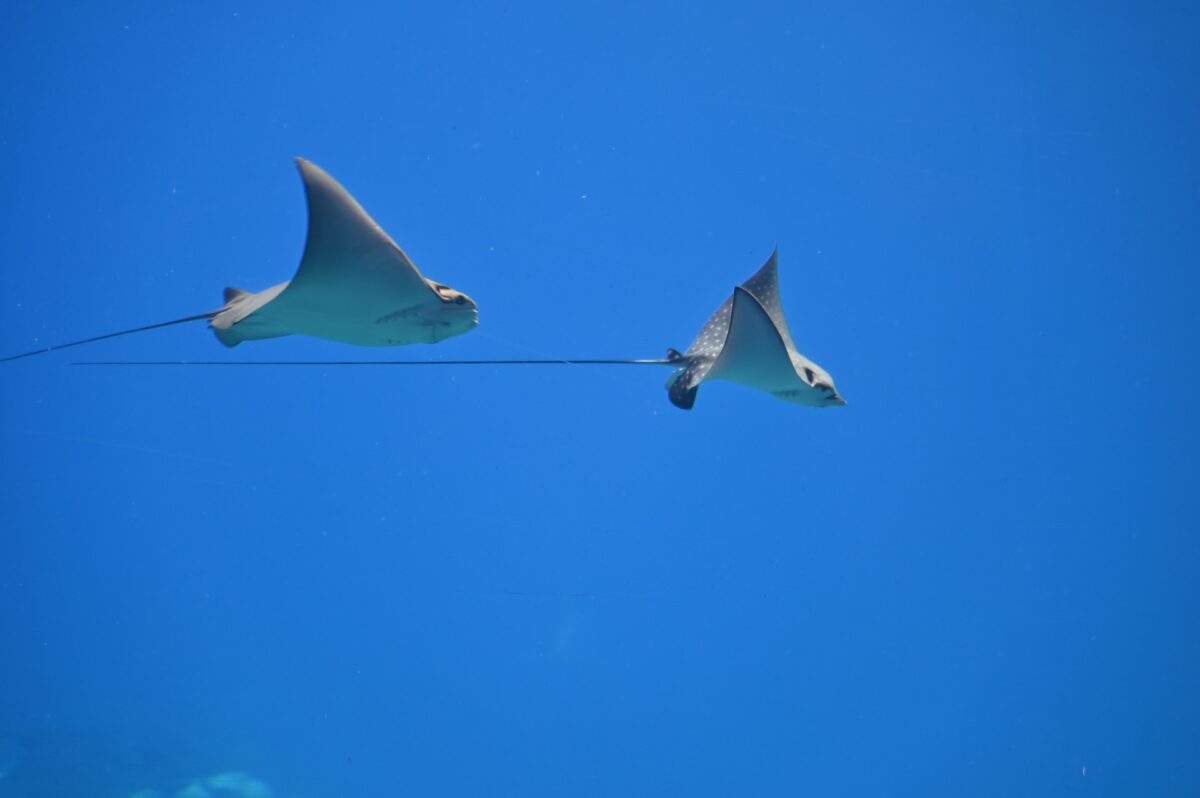
This species is truly a unique creature with some interesting physical features that set it apart from other fish in the ocean.
Let’s dive deeper into each of these characteristics:
Flat Body
As mentioned earlier, their flat body is wider than it is long, which is quite unusual for a fish. This flat shape allows it to move gracefully along the ocean floor, much like a stingray.
Diamond-Shaped Body
Their diamond shape is another distinctive feature that helps it move through the water with ease. The pointed snout and wing-like pectoral fins enable it to swim and glide with grace and agility.
Rough Skin
It has rough, sandpaper-like skin that helps protect it from predators in its natural habitat. The rough texture also helps the fish to blend in with the sandy or muddy ocean floor where it lives.
Sharp Tail
The tail is another unique feature that sets it apart from other fish. The tail is sharp and pointed, and can be used as a weapon if necessary to defend against predators or to catch prey.
Size
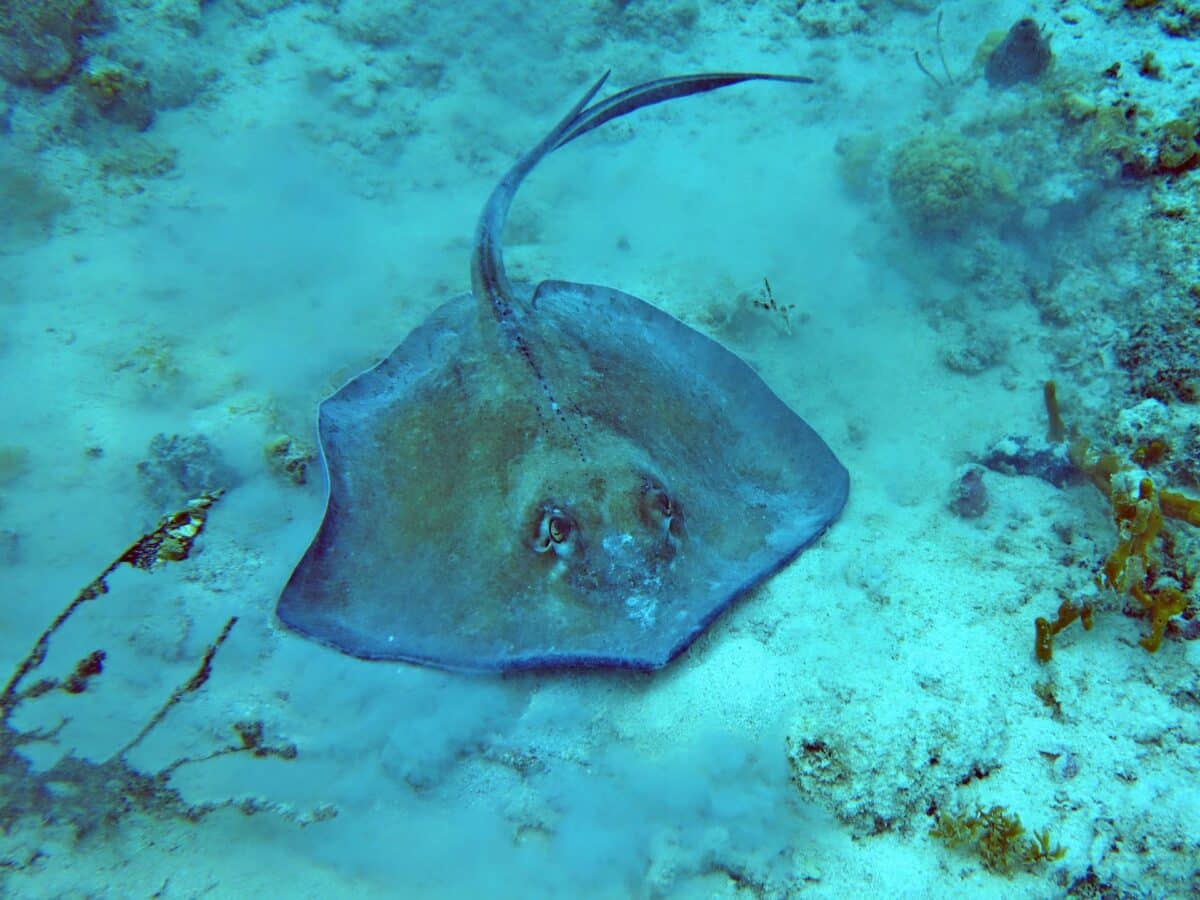
Skate fish come in all shapes and sizes, and it’s truly amazing to see the range of dimensions that they come in. From the tiny to the enormous, here are some of the most fascinating facts about their size:
- Smallest Species
The smallest species of skate fish is the Pygmy skate, which can be as small as 8 inches in length. It may be tiny, but don’t underestimate its ability to survive in the big blue sea!
- Largest Species
The largest species is the common skate, which can grow up to a whopping 9 feet in length! That’s longer than most people are tall. These massive creatures can also weigh up to 200 pounds, making them some of the heaviest fish in the ocean.
- Gender Differences
Did you know that male and female skate fish can differ significantly in size? Females tend to be larger than males, with some species having a difference of up to 50% in body size!
- Egg Size
Skate fish lay some of the largest egg cases of any fish species, with some cases measuring up to 10 inches in length! These egg cases can be found washed up on shorelines and are sometimes called “mermaid’s purses.”
- Juvenile Growth
Juvenile skate fish grow at a rapid pace, sometimes doubling in size in just a matter of weeks! This is important for their survival, as they need to reach a certain size in order to avoid being eaten by larger predators.
Habitat
Skate fish can be found in oceans all over the world, from the icy waters of the Arctic to the warm tropics. They are bottom-dwelling fish and can be found in both shallow and deep waters.
Skate fish prefer sandy or muddy ocean floors, where they can blend in with their surroundings and easily catch prey. They are often found near reefs or other underwater structures where they can hide from predators and ambush their prey.
What do skate fish eat?
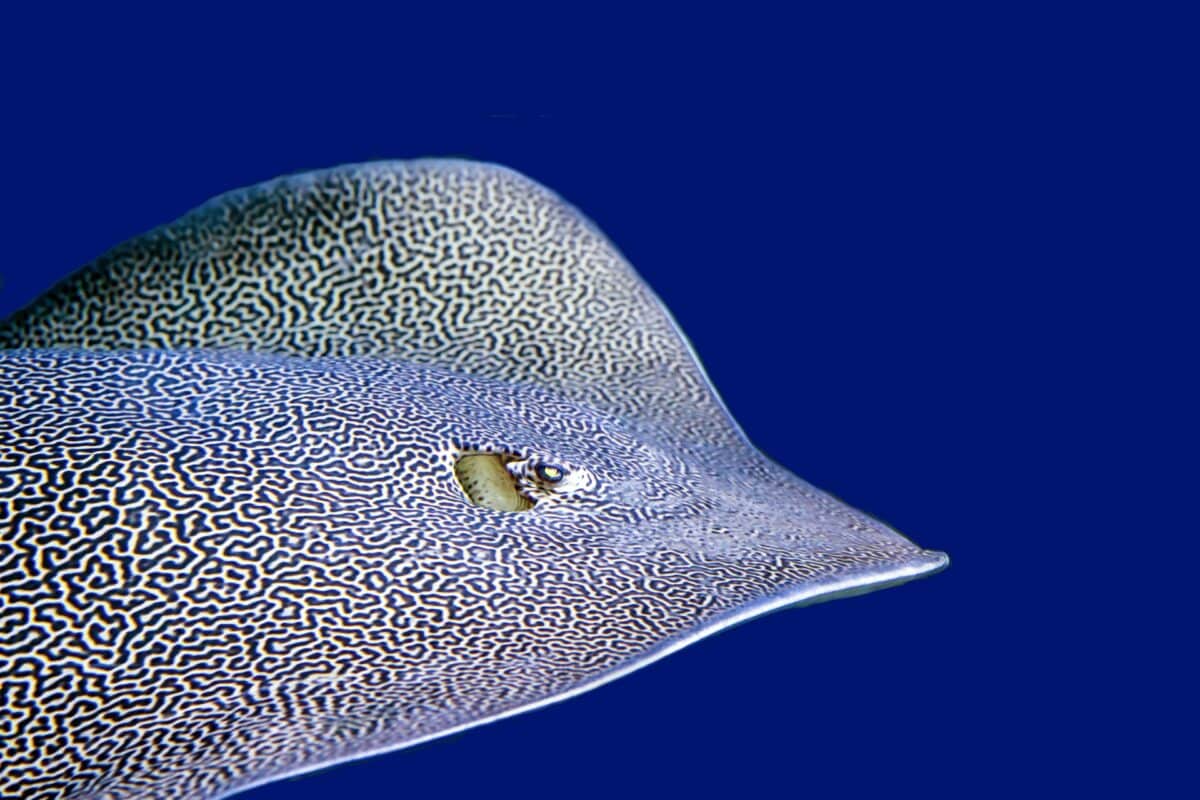
Are you curious about what skate fish like to chow down on? Well, get ready to dive into the fascinating world of their eating habits!
Skate fish are opportunistic feeders, which means they’ll eat pretty much anything they come across. Some of their favorite foods include:
- Fish: Skate fish are known to eat a variety of fish species, including herring, mackerel, and cod.
- Crustaceans: These tasty treats include crabs, shrimp, and lobsters. Yum!
- Mollusks: Skate fish enjoy snacking on clams, mussels, and squid.
- Small sharks: That’s right, even though they are usually smaller than sharks, they aren’t afraid to take a bite out of their larger relatives.
Skate fish use a unique feeding behavior called suction feeding to capture their prey. They create a vacuum with their mouths and suck in their food from the ocean floor. It’s like they’re using a straw to slurp up their meals!
One interesting fact about them is that they have a highly efficient digestive system. Their long, coiled intestines allow them to extract as many nutrients as possible from their food. This means that they can survive on relatively low amounts of food compared to other fish species.
So, there you have it! They are opportunistic eaters that enjoy a diverse range of seafood options. Whether they’re snacking on fish, crustaceans, mollusks, or even small sharks, they’re sure to savor every bite.
Did you know that skate fish also have a taste for some unusual delicacies?
Skate fish have been known to eat horseshoe crabs, which are ancient arthropods that have been around for over 400 million years. Horseshoe crabs are an important part of the marine ecosystem, as their eggs provide a vital food source for migratory birds.
Skate fish are also not afraid to take on prey that may be too big for them to handle. They have been known to attack and consume octopuses, which are notorious for their ability to defend themselves with their powerful tentacles. It takes a brave skate fish to take on an octopus, but it seems that they are up for the challenge!
Despite their unusual eating habits, skate fish are a delicious and nutritious seafood option that is enjoyed by people all over the world. They are a rich source of protein, omega-3 fatty acids, and vitamins and minerals, making them a great addition to any healthy diet.
What is the Nutritional value of skate fish?
Skate fish is not only delicious, but it also boasts impressive nutritional value. Let’s take a closer look at the various nutrients that can be found in this unique seafood.
#1 Protein content
This fish is an excellent source of protein, with a 3-ounce serving providing approximately 0,5 ounces of protein. This makes it a great option for athletes or anyone looking to build muscle mass. Additionally, protein is essential for maintaining healthy skin, hair, and nails, as well as for repairing and building tissue in the body.
#2 Omega-3 fatty acids
Omega-3 fatty acids are a type of healthy fat that is essential for maintaining optimal health. They have been shown to reduce inflammation, lower the risk of heart disease, and even improve brain function. Skate fish is a great source of omega-3 fatty acids, with a 3-ounce serving containing approximately 0,01 ounce of these essential fats (which sounds like a little, but is, in fact, a huge amount of fat.)
#3 Vitamins and minerals
Skate fish is also a rich source of various vitamins and minerals, including vitamin B12, vitamin E, and selenium. Vitamin B12 is crucial for maintaining healthy nerve function and producing red blood cells, while vitamin E is a powerful antioxidant that can help protect against cellular damage. Selenium is important for maintaining a healthy immune system, and also plays a role in regulating thyroid function.
#4 Low Calorie Content
In addition to these nutrients, skate fish is also relatively low in calories, with a 3-ounce serving containing only about 80 calories. This makes it a great option for anyone looking to maintain a healthy weight while still getting all the essential nutrients they need.
Overall, it is an excellent choice for anyone looking to incorporate more nutrient-dense seafood into their diet.
Whether you’re looking to build muscle, protect your heart health, or simply maintain optimal health and well-being, skate fish is a tasty and nutritious option that is sure to delight your taste buds and nourish your body.
Popular Skate Fish Recipes
Skate fish is a popular ingredient in many regional cuisines around the world. Here are some popular recipes:
- Skate Wing with Brown Butter and Capers: In this classic French dish, the skate wing is pan-seared in butter until golden brown, and then topped with a delicious caper sauce.
- Fish and Chips: In the UK and many other countries, skate fish is a popular choice for making fish and chips. The meaty and firm texture makes it a perfect candidate for deep-frying.
- Escalivada with Skate: In this traditional Catalan dish, the skate is grilled and served with roasted vegetables like eggplant, bell peppers, and onions.
Preparation Techniques
When it comes to preparing this fish, there are several techniques that can be used. Here are some popular ones:
- Pan-Frying: Pan-frying is a simple and quick way to cook skate fish. The skin of the skate is left on to protect the delicate flesh, and it is cooked in a hot pan with oil or butter until crispy.
- Poaching: Poaching is a gentle cooking technique that is perfect for skate fish. The skate is cooked in a flavorful liquid, such as fish stock, until it is tender and juicy.
- Grilling: Grilling is a great way to cook skate fish, especially in the summer months. The skate is marinated in a flavorful sauce and then grilled until it is charred and smoky.
Regional Variations
The culinary uses of skate fish vary from region to region. Here are some regional variations:
- France: In France, skate fish is often prepared with brown butter and capers, as mentioned earlier. It is also commonly served with a beurre blanc sauce, which is made with butter and white wine.
- United Kingdom: In the UK, it is a popular choice for making fish and chips. The fish is battered and deep-fried until crispy and golden.
- Spain: In Spain, it is often served with roasted vegetables and a garlicky aioli sauce. It is also sometimes prepared with a tomato-based sauce and served with rice.
Is Skate Fish the Same As Stingrays?
Have you ever wondered if skate fish and stingrays are the same thing? While these two creatures may look similar at first glance, there are some key differences that set them apart.
Skate fish and stingrays both belong to the same family, Rajidae, which is a group of fish with flattened bodies and broad pectoral fins. However, there are some key differences between skate fish and stingrays that set them apart.
Let’s take a look:
Appearance
Skate fish and stingrays have different physical characteristics. Skate fish have pointed snouts and diamond-shaped bodies. Meanwhile, stingrays have a more rounded body and a long, whip-like tail with a barbed stinger at the end.
Habitat
Skate fish and stingrays also have different habitats. Skate fish are typically found in colder waters, while stingrays are more commonly found in warmer waters.
Diet
While both skate fish and stingrays are carnivorous, they have slightly different diets. Skate fish primarily feed on small fish, crustaceans, and mollusks. On the other hand, stingrays eat a wider variety of prey, including fish, crustaceans, and even mollusks.
Reproduction
Skate fish and stingrays also have different reproductive strategies. Skate fish lay eggs that are enclosed in a tough, leathery case that is commonly referred to as a mermaid’s purse. Stingrays, on the other hand, give birth to live young.
Behavior
Skate fish and stingrays also exhibit different behaviors. The former are known for their graceful swimming and gliding along the ocean floor, while stingrays are known for their tendency to bury themselves in the sand and ambush their prey.
Commercial Value
Skate fish and stingrays also have different commercial values. Skate fish are commercially fished for their meat, which is considered a delicacy in some cultures. Stingrays, on the other hand, are not typically targeted for their meat. However, their skin is highly prized in some parts of the world for use in products such as leather goods and jewelry.
Swimming behavior
The two species also have different swimming behaviors. Skate fish are known for their graceful gliding along the ocean floor, while stingrays are capable of more rapid and agile movements, thanks to their powerful tail muscles.
Geographic distribution
Skate fish and stingrays have different geographic distributions. Skate fish can be found in colder waters of the North Atlantic, North Pacific, and Southern Ocean, while stingrays are found in warmer waters around the world.
Conservation status
Finally, skate fish and stingrays have different conservation statuses. Many species of skate fish are considered endangered or vulnerable due to overfishing and habitat destruction. Some species of stingrays are also threatened by overfishing, but others are considered to be of “least concern.”
So, while skate fish and stingrays may look similar at first glance, there are actually some important differences between these two species. Whether you’re a marine enthusiast or simply curious about the creatures that live beneath the waves, learning more about these fascinating fish is sure to inspire a sense of wonder and awe.
Are Skate Fish Harmful to Humans?

While skate fish are not typically aggressive towards humans and do not pose a significant threat, they do have a few ways to defend themselves. One of their primary defense mechanisms is their sharp, pointed tail, which they can use to inflict painful injuries if they feel threatened or cornered.
In addition to their tail, skate fish also have rows of small, backward-facing teeth in their mouth that are capable of inflicting minor injuries if someone were to handle them carelessly. However, it’s worth noting that most people who handle skate fish do so safely and without incident, and serious injuries are relatively rare.
Overall, while skate fish do have the potential to hurt you if you mishandle them or provoke them, they are generally not considered dangerous or aggressive toward humans. As with any wild animal, it’s always a good idea to treat skate fish with respect and caution to avoid any unnecessary harm to either yourself or the fish.
9 Common Myths and Misconceptions About Skate Fish
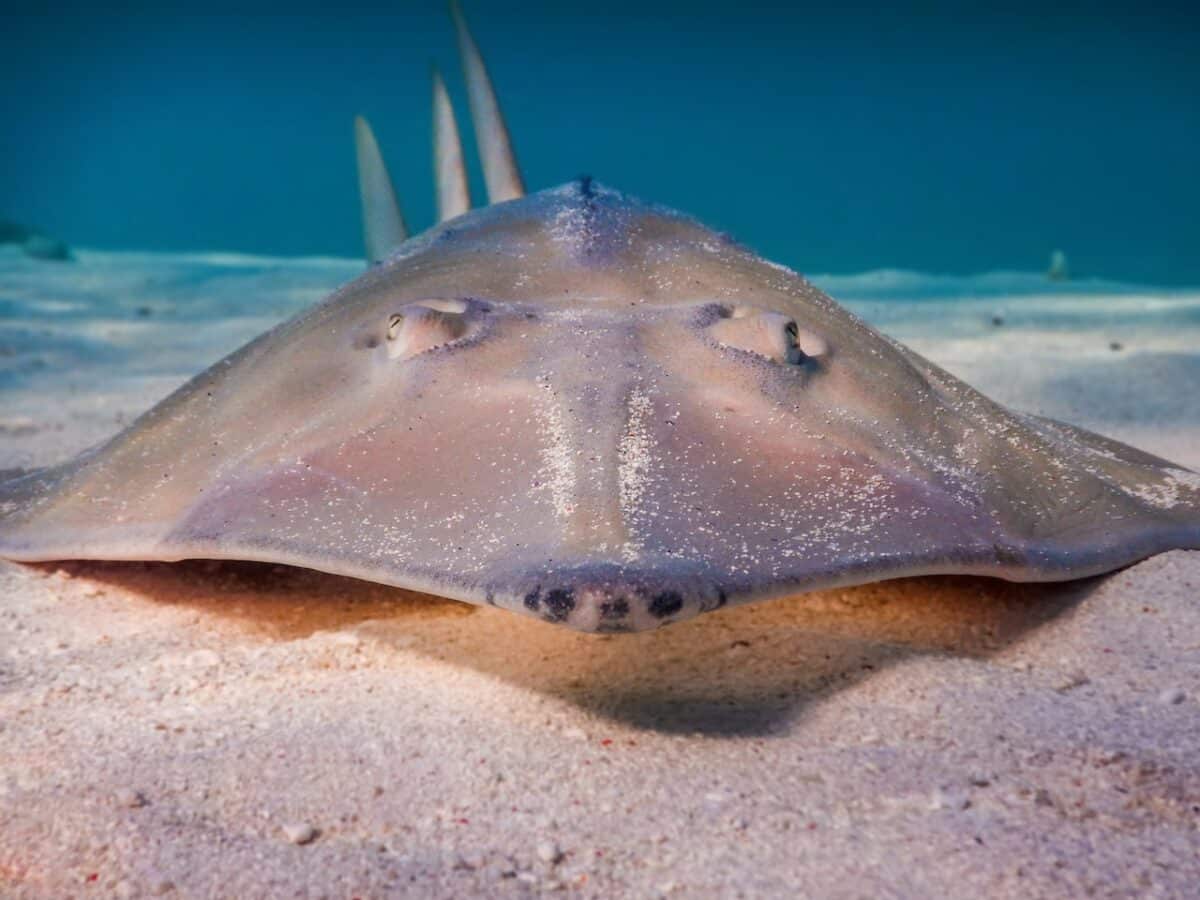
#1 They are dangerous to humans
This is a common myth, but it’s not entirely true. While skate fish do have rough skin and sharp spines, they are not typically aggressive towards humans. However, as mentioned earlier, their spines can be dangerous if stepped on or handled improperly.
#2 They are all the same
This is not true. There are actually many different species, each with its own unique characteristics and habitats.
#3 They are not good to eat
While skate fish may not be as well-known as some other types of seafood, they are actually quite delicious when prepared properly. In fact, they are a popular ingredient in many cuisines around the world.
#4 They are bottom feeders and are therefore dirty
This is a common misconception. While it’s true that they are bottom-dwelling fish, they are not necessarily dirty or unclean. Like many other types of fish, they can be delicious when properly cleaned and prepared.
While these bottom-dwellers may resemble sharks in appearance, they are not actually related to them. They belong to a different family of fish altogether.
#6 They are poisonous
This is not true. While some species can produce a mild toxin, it is not harmful to humans when consumed.
#7 They are ugly
Beauty is in the eye of the beholder! While some people may find them unappealing in appearance, others may appreciate their unique diamond-shaped body and interesting features.
#8 They are endangered
While some species are indeed endangered due to overfishing and habitat destruction, not all species are threatened. It is important to check the status of a particular species before consuming it.
#9 They are easy to catch
Catching them can actually be quite challenging, as they are bottom-dwelling fish that are often found in deeper waters. It requires specialized equipment and techniques to catch them successfully.
Conclusion
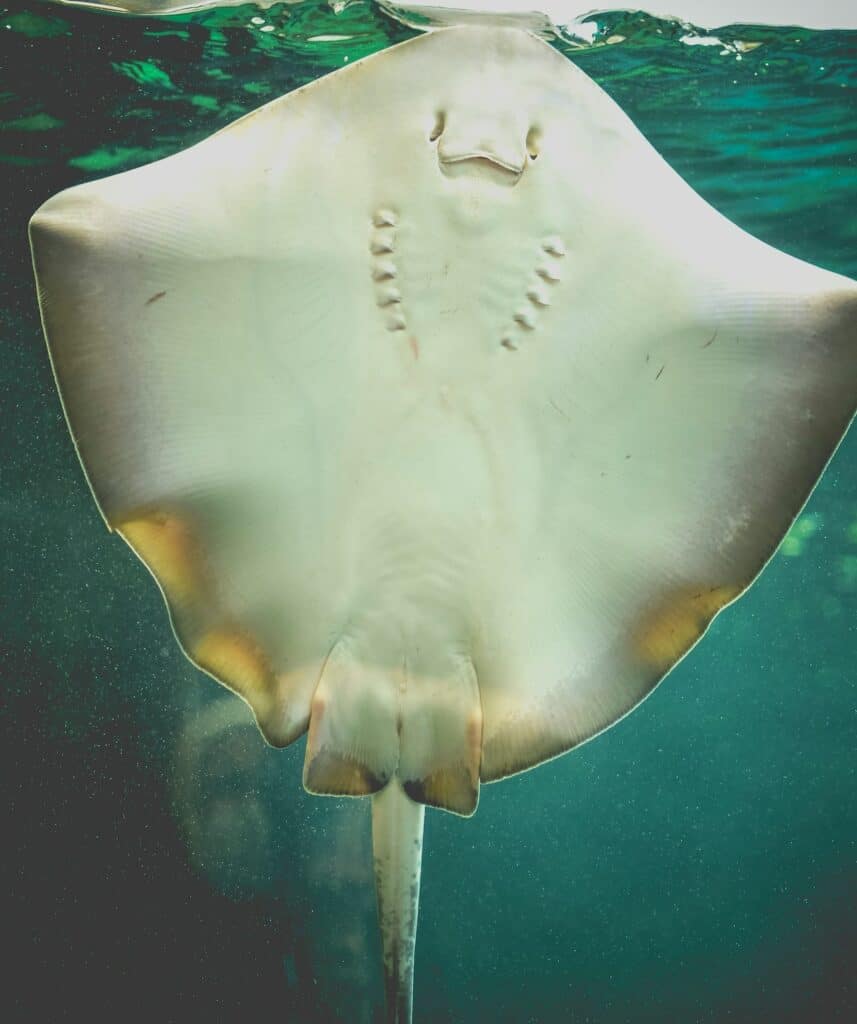
Skate fish is not only a unique and fascinating creature with distinctive physical features, but also a nutritious and delicious addition to any seafood lover’s diet.
With the myths surrounding skate fish debunked, we can appreciate and enjoy this creature even more, while also being mindful of sustainability practices to ensure its continued presence in our oceans.
Thank you for reading this article! Keep learning about the secrets of our vast oceans by reading our post What Are Pistol Shrimps?
Join our Forum for free today!


